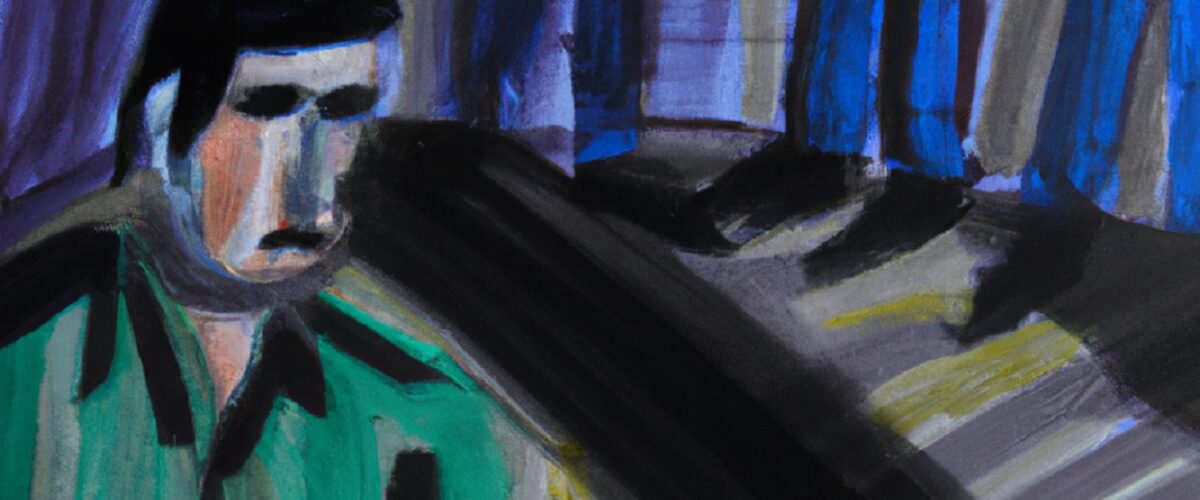
Bhavesh Seth
Confessions made to the police cannot be admitted into evidence unless made in the immediate presence of a Magistrate and a judge has confirmed that it was given voluntarily. This rule against admitting confessions made to the police ostensibly safeguards against false confessions obtained through torture and undue influence. Acutely aware that such coercive tactics are employed by the police in India, the drafters of the Indian Evidence Act saw it fit to exclude such confessional statements from relevance altogether.
Section 27 of the Indian Evidence Act, 1872 (‘S. 27’) serves as a proviso to this rule: some parts of a confession made to the police can be proved as long as the information given by the accused leads to the discovery of a hitherto unknown fact. Discovering such a fact guarantees that the disclosed information is trustworthy. Based on this guarantee, S. 27 admits those portions of the disclosures or confessions that relate distinctly to the fact thereby discovered. The exception under S. 27 requires that two conditions be met: (i) a relevant fact is discovered and (ii) it is discovered in consequence of information disclosed by the accused.
Broadly, the police can discover three types of facts as a consequence of such information. One, material, physical objects: stolen goods, contraband, weapons used in the crime, the body of the deceased and so on. Two, a combination of a material object and testimonial evidence; such as the identity of an individual from whom some incriminating evidence is eventually recovered. Three, mere knowledge of a fact, such as the existence of other witnesses or information about the origins of the murder weapon. This post focuses on the third category of facts – where no physical object is discovered strictly as a consequence of the accused’s statement.
Can the discovery of such facts trigger the exception under S. 27? First, this post discusses this category of facts, ‘standalone mental facts’, and outlines situations where they are often discovered. Second, the post will discuss how such facts have been treated in the context of S. 27, demonstrating that the Supreme Court has held that such facts do not meet the requirements of S. 27. As explained below, courts have not given sufficient reasons for this conclusion. Third, the post argues that standalone mental facts are excluded because they do not guarantee that the information given by the accused is trustworthy and reliable, which is an important guarantee that forms the basis of the exception in S. 27.
Standalone mental facts
The third category of facts mentioned above can be understood as ‘standalone mental facts’ that are not discovered in connection with the recovery of any actual material object. These facts convey information within the culprit’s knowledge and often provide contextual information about some incriminating evidence. For example, in State (NCT of Delhi) v. Navjot Sandhu (2005), the accused disclosed the names of five deceased terrorists, the fact that police uniforms and explosives were arranged to organize bomb blasts, and the fact that the discovered mobile phones belonged to the co-accused. None of this information led to the discovery of any new material, physical object. Such standalone mental facts are often sought to be proved against the accused under S. 27 in terror cases.
An important feature of such standalone mental facts is that they often describe the ‘state of things’ in relation to the crime or provide details of some evidence already on record. Thus in HP Administration v. Om Prakash, the accused recovered the murder weapon, a knife; and later disclosed the identity of the vendor from whom the knife was purchased. No other physical evidence relating to the sale was discovered in consequence of the disclosure and therefore, the identity of the vendor was a ‘standalone mental fact’. The prosecution often tries to prove the source or origin of some incriminating evidence by claiming it is a new fact discovered in consequence of a disclosure statement. This category of facts is common in cases involving staggered disclosures; where the police collect multiple statements from the accused under S. 27 over the course of the investigation. The accused first states the location of an incriminating object and later, makes a separate statement after its recovery and discloses additional details related to the object.
Other examples of standalone mental facts include the existence of other witnesses, the role of co-accused in the crime, and information about the source of the murder weapon.
Standalone mental facts under S. 27
- Privy Council
Two inconsistent lines of jurisprudence emerge from the Madras High Court and other courts on the issue of standalone mental facts and S. 27.
In Emperor v. M. Ramanujam (1934) (followed in Ramamurty v. Emperor, 1939), the Madras High Court found that disclosures were admissible under S. 27 even when no physical object was recovered. The court reasoned that S. 3 defined ‘facts’ to include anything capable of being perceived by the senses, which would include mental facts as well. On the other hand, a Full Bench (7 judges) of the Bombay High Court in Sukhan v. Emperor decided that ‘fact discovered’ in S. 27 refers only to material facts, and not mental facts. Thereafter in Ganu Chandra v. Emperor, the Calcutta High Court reiterated that the ‘fact’ discovered under S. 27 must relate to some concrete fact.
The inconsistency in these decisions was ostensibly resolved with the landmark Privy Council judgment in Pulukuri Kottaya v. Emperor (1947), where the Madras High Court line of cases were held incorrect. The bench approved of the reasoning in Sukhan, and the SC has repeatedly affirmed the correctness of Pulukuri Kottayya ever since. It is notable however that the judgment does not specifically engage with the Madras High Court’s judgment in Ramanujam, as Pulukuri Kottayya was not a case where standalone mental facts were discovered. Instead, Pulukuri Kottaya concerned how much of information given by the accused can be admitted under S. 27 when a material fact has been discovered.
Nevertheless, later in 1972, faced with the same question in HP Administration v. Om Prakash, the Supreme Court disregarded precedent from the Madras High Court to hold that standalone mental facts are not admissible under S. 27.
- Supreme Court
In HP Administration, the Court considered a disclosure made by the accused, identifying the vendor from whom the murder weapon was purchased. The accused had already recovered the murder weapon when this information was disclosed. No other object was recovered from the vendor. A 2-judge bench of the SC decided that the disclosure was not admissible, holding that a ‘fact discovered’ under S. 27 must refer to a material fact directly related to the information given by the accused. The Court rejected the argument that the identity of the vendor was also a fact discovered and held that a witness cannot be ‘discovered’ under S. 27 unless some physical evidence is also recovered from them (paragraph 14).
The Court does not give clear reasons for this conclusion. It mentions that information merely explaining the material fact discovered cannot be proved, but does not explain why a witness, without an accompanying object, cannot be a fact discovered under S. 27. In a weak appeal to authority, the court offers a possible justification:
“As explained by this Court as well as by the Privy Council, normally Section 27 is brought into operation where a person in police custody produces from some place of concealment some object said to be connected with the crime of which the informant is the accused.”
Here the Court refers to the Privy Council’s decision in Pulukuri Kottayya v. Emperor (1947) to assert that in practice, physical objects are commonly recovered when S. 27 is invoked by the prosecution. Importantly, this case is not strictly applicable because it did not involve a standalone mental fact. In any case, the reference made in HP Administration is merely anecdotal. It does not answer the core question: why must physical evidence be recovered for a disclosure statement to be valid under S. 27? It is worth noting that in HP Administration, despite holding that the disclosure was not admissible under S. 27, the SC eventually allowed the accused’s conduct of pointing out the shop from where the knife was purchased, as subsequent conduct under S. 8.
The question of standalone mental facts was litigated once again in Navjot Sandhu (2005). Here, the prosecution argued that S. 27 should be read broadly to cover standalone mental facts, relying on the broad definition of ‘fact’ under S. 3 of the Evidence Act. The SC was not convinced. It noted that a coordinate bench in HP Administration had already rejected the discovery of standalone mental facts under S. 27 and this holding had not been overruled. While the bench did not necessarily agree with this conclusion – the judges record that they felt “handicapped in approaching the issue independently, unfettered by the decision in Om Prakash case” – they did not declare it per incuriam. Instead, they avoided answering the question altogether by excluding the contentious disclosure for other reasons.
To sum up, the two important judgments dealing with the question of standalone mental facts agree that such facts cannot trigger the exception under S. 27. But both judgments fail to adequately explain their reasoning and, in any case, neither judgment turned on the admissibility of the standalone mental facts.
It emerges that there are no clear reasons for the exclusion of standalone mental facts from the scope of S. 27. Nevertheless, courts have since relied on Pulukuri Kottaya and HP Administration to hold that the fact discovered under S. 27 must relate to a material, physical object.
Possible justifications for the limitation in S. 27
S. 27 is an exception to the general rule against proving confessions made to the police. As the general rule was introduced as a safeguard against flawed evidence obtained through coercion and torture, it is important to exercise caution while admitting statements under S. 27. The principle underlying S. 27 is a guarantee that the accused’s disclosure is trustworthy. This guarantee flows from the discovery of a new fact pursuant to information given by the accused, which raises a presumption that the information is correct. Despite this presumption, courts routinely exercise caution while admitting such statements so as to be assured of the credibility of the information given and the fact discovered. It follows that the fact discovered under S. 27 should be such that its discovery offers a guarantee of trustworthiness of the disclosure.
This guarantee of trustworthiness is found in the rule that under S. 27, the fact discovered must not already be known to the police – if it was, there is no guarantee that the accused actually gave the disclosure and that he had knowledge of the concealed fact. This guarantee is also reflected in the Supreme Court’s recent judgment in Bijender v. State of Haryana. Here, the Court emphasized the importance of ensuring that the recovery evidence is unimpeachable and listed several circumstances that aid in gauging the intrinsic evidentiary value and credibility of the recovery. Notable among these circumstances are how common is the recovered object, how easy is it to transfer, the nature of the object and its relevance to the crime, and the trustworthiness of the witness attesting the recovery – each of these circumstances presume that an object has been recovered under S. 27. In Pancho v. State of Haryana, discovery of some articles was rejected because the articles were easily available and recovered belatedly, which raised questions as to their intrinsic evidentiary value.
It is pertinent that past use, ownership, or the significance of a recovered object is not admissible under S. 27 – only the object, its location, and the knowledge of the accused of the same can be proved. Standalone mental facts invariably relate to some of the former aspects – to the ‘state of things’ relating to the prosecution’s evidence. If the ‘state of things’ related to a recovered object is not admissible as a discovered fact under S. 27, it follows that the ‘state of things’ relating to some incriminating fact should not be admissible under S. 27 in the absence of a recovered object either.
Standalone mental facts do not offer a guarantee of trustworthiness because it is difficult to verify that the fact was discovered only because of the disclosure. It is possible that the mental fact was already known to the police or was informed by other inadmissible evidence; and S. 27 is used to make this known fact relevant against the accused. Admittedly, it is open to the defence to demonstrate that the fact was already known and challenge the disclosure. But this is difficult to do for mental facts, which by their very nature, resist direct verification. While the possibility of forging a case exists with physical evidence as well, the recovery of an actual, material object otherwise missing from the record provides the guarantee of truthfulness underlying S. 27. As reiterated by Justice Lakshmana Rao in his minority opinion in Emperor v. Ramanujam, only the discovery of a material object proves that the information in consequence of which the discovery was made is true and not fabricated.
Conclusion
The SC does not allow standalone mental facts to trigger the exception under S. 27, but does not clearly explain why. This post argues that a possible reason is that mere mental facts do not guarantee the truthfulness or trustworthiness of information given by the accused, whereas the recovery of a physical object offers this guarantee. This reasoning has not been articulated clearly by the Supreme Court, but finds reference in early jurisprudence on the point. This analysis is necessary to inform the scope of S. 27 and statements that can be proved under the provision. Considering the rampant misuse of S. 27 by the prosecution and the prejudice often caused to the defence, it is important that courts acknowledge the true scope of this provision and exercise restraint while relying on disclosure evidence to decide cases.
Bhavesh Seth is part of the Litigation team at Project 39A.





